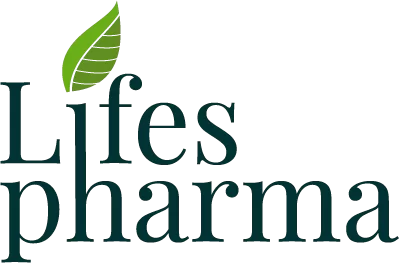This question is an often asked question by those about to decide to go all out and use the drug treatment for treating their breast cancer and by those still undecided on the sidelines. The truth is that tamoxifen is a very potent and efficacious treatment for breast cancer. It has been found that it can effectively prevent breast cancer from recurring by 40% to 50% in postmenopausal women and by 30% to 50% in premenopausal women.
An impressive performance
There’s not enough space in the “Introduction” section above to answer all the questions that need to be asked in order to fully grasp the enormity of the area covered by drug medication tamoxifen.
But here’s more content to answer a bit more on the question posed in the heading.
Tamoxifen can also reduce the risk of new breast cancer developing in the other breast by 50% and can amazingly shrink large hormone-receptor-positive breast cancer prior to a surgical operation.
The tamoxifen and breast cancer connection
With the words “hormone-receptor-positive breast cancer” we’ve established a strong connection between tamoxifen and breast cancer. And what is the definitional connection?
That tamoxifen is an “effective hormone therapy used to treat hormone receptor-positive breast cancer”. There it is in a nutshell. And after establishing the connection, we can now go ahead and ask all the questions that need to be asked about that connection.
For you and others who are also reading this article, all these questions will prove highly interesting, informative, unique and very, very useful indeed, so open your ears wide for more perks.
What is the dynamism behind tamoxifen?
In other words, how does it function or work? This is very important and it can be answered by saying it’s a kind of hormonal therapy called a selective estrogen receptor modulator (SERM).
What the drug does when ingested is it clings to protein specific hormone receptors in your breast cancer cells.
Once inside the cell walls, it immediately blocks the cancer from accessing the hormones they need to feed on, propagate and grow. Get it? It’s really as simple as that but the rewards are incalculable.
Anyone ordered tamoxifen?
A simple question that’s not easy to answer because it’s not about ordering food but another way of saying can just anyone barge in and take tamoxifen?
And the answer is no. It’s specific only for men and women who have hormone receptor-positive breast cancer, which simply translates into cancer cells having access to hormones and are therefore feeding, growing and self-producing themselves so a blocker is needed and you know what that is.
When tamoxifen is called in to the rescue it carries out its job by lowering the risk of breast cancer (through its blocking technique) for:
- women who have a greater risk of getting breast cancer simply because they have a family history of the disease or mutated breast cancer genes (BRCAs) are freely enjoying themselves inside your breasts without you even knowing.
- women and men who have been diagnosed with breast cancer to stop the cancer from recurring after cancer cells have successfully been starved to oblivion. The recurrence can take the form of:
- breast cancer development in the other untreated breast
- a recurrence of breast cancer following any of these medical treatments; surgery, chemotherapy or radiation therapy.
The only person who can positively say that tamoxifen is the right medication for you in all these instances is your physician or doctor.
How effectively potent is tamoxifen?
It’s medically established that millions upon millions of people have successfully used tamoxifen to treat or prevent their breast cancer conditions. Moreover, it can definitely lower the risk of breast cancer in:
- the opposite breast by an amazing 50%
- premenopausal women by as much as from 30% to 50%
- postmenopausal women by 40% to 50%
And it can also reduce the risk of:
- initial breast cancer diagnosis by up to 40%
- invasive breast cancer after a diagnosis of early-stage cancer, noninvasive breast cancer (ductal carcinoma in situ or DCIS) by up to 50%
Any other unique benefits of tamoxifen?
Besides its remarkable ability to lower the risk of breast cancer and recurrence,
tamoxifen also has the propensity to:
- prevent the loss of your bone structure (osteoporosis) by disease of the bones that can render your bones especially after menopause resulting in porous bones that easily break but heal slowly.
- Lower your cholesterol levels
Is taking tamoxifen a problem?
No, taking tamoxifen is perhaps the easiest part to do as all the difficult parts are performed in the enclosure of your body where, receptors, hormones, body tissue and cancer cells fight a battle to the death within your affected breast.
The very act of taking tamoxifen is very simple. It requires the presence of two items such as:
- Nolvadex pill and
- Soltamox liquid
And that’s all there is to it. You simply get a glass, fill it with water, pop the pill in your mouth and drain it down with the liquid in the glass.
What about the duration of the treatment?
Normally, people who opt to take tamoxifen their treating their breast cancer do so over a period of 5 years and yes, sometimes, it can take up to 10 years of treatment.
The duration of the duration depends entirely on the nature of your breast cancer and the diagnosis done on it by your physician.
It is possible that after the initial 5 years of treatment your healthcare provider might switch you over to a different hormone therapy for several more years, maybe 3 to 4 additional years.
What are the risks involved in taking tamoxifen?
Although very rare, it does happen that tamoxifen may actually result in problems such as:
- blood clots, thrombosis of the veinhttps://my.clevelandclinic.org/health/diseases/16911-deep-vein-thrombosis-dvt (deep)andstrokes
- eye problems such ascataracts
- Endometrial or uterine cancer
Are there any other medications for breast cancer?
Yes there are othermedications that can reduce the risk of breast cancer including:
- Raloxifene, another SERM type of medication that also blocks estrogen receptors on breast cancer cells. While it can only be used in postmenopausal women, it doesn’t increase the risk of uterine cancer and it can reduce the risk of invasive breast cancer by almost 40%.
- Aromatase inhibitors such as anastrozole and exemestane are able to reduce estrogen levels in postmenopausal women.
Takeaway
This article has attempted to pinpoint the most important features of tamoxifen in a brief and cursory manner while highlighting the very important feature that pertain to the efficacy of tamoxifen as a treatment for breast cancer. Additionally, the content of the article leaves no doubts in the mind of the reader that tamoxifen is perhaps the most effective treatment for breast cancer and who knows it may well develop into an effective treatment for other cancers as well.



